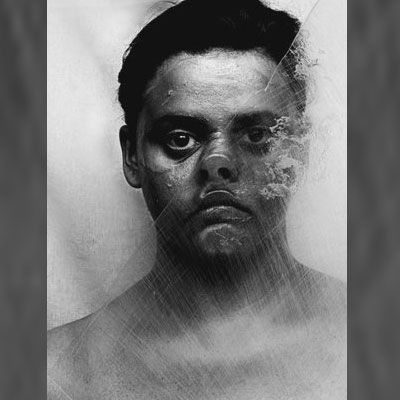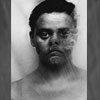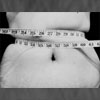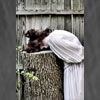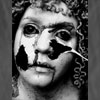 |
||||||||||||||||||||||||||||||||||||||||||||||||||||||||||||||||||||||||||||||
Painter and mixed-media artist Erin Partridge of San Luis Obispo, California, delivers her work through the perspective of a recovering anorexic. In exploring her own recovery from anorexia, Erin’s paintings and drawings subtly juxtapose the perceived body image against the frail, bony reality. At once flush with color and washed out, the emphasis on skin and the face delve deeper into the emotional, mental, and psychological torment of the one struggling with anorexia. Words and patterns overlap the big-eyed, often fetal-positioned figure, showing the vulnerability and fear that chains her to her illness. Caryn Drexl of Clearwater, Florida, creates beautifully crafted yet unsettling photographs of destructive/self-destructive views of beauty. In her sometimes Cindy Sherman-esque self-portraits, what is cearly a beautiful face and body becomes distorted into something shocking. As such, each piece delivers a one-two punch of recognition—what we classically perceive as beauty vs. a purposeful distortion that repels us. Alexander Wilkins’s photographs document yet another aspect of the human body—our ability to change it. While going through the process of gender reassignment, Wilkins relays the changes his body goes through in its transformation from female to male. Their stark, frank assessment of body images that may at first seem simple and unremarkable become courageous as you recognize the depth of meaning that changes (such as the growth of facial hair, for instance) have for its owner. Through this exhibit, Moore and Woodall want viewers to walk away with the knowledge of how destructive popular culture can be to an individual’s body image. And in viewing the photographs on display, recognize that the more you look at unconventional beauty and question the culture’s view of beauty the more you will find true beauty. |
||||||||||||||||||||||||||||||||||||||||||||||||||||||||||||||||||||||||||||||

